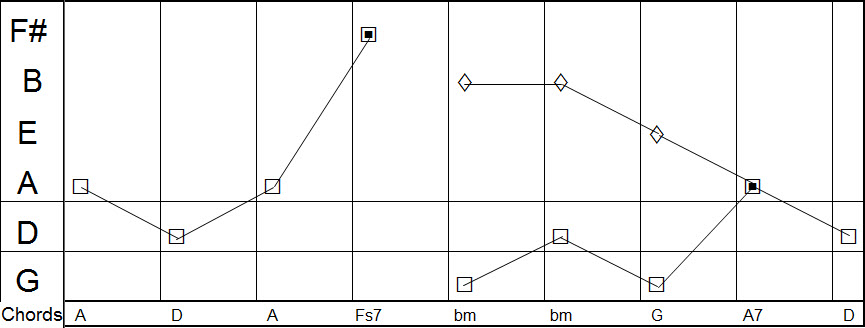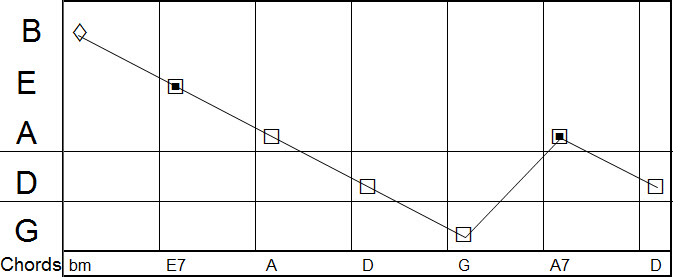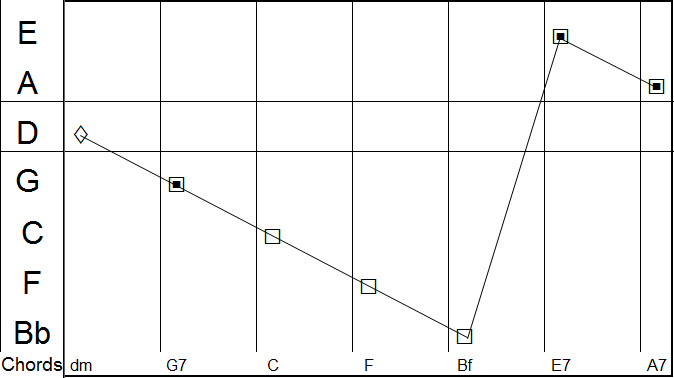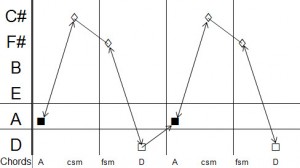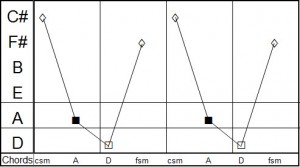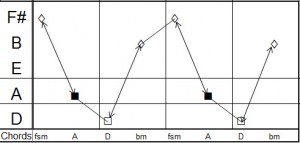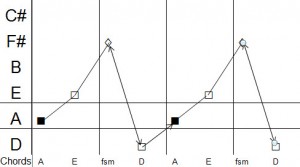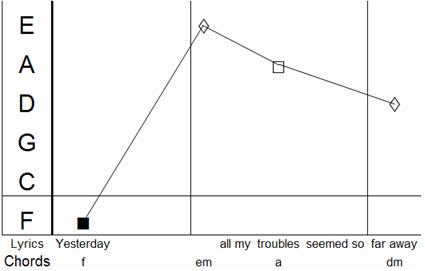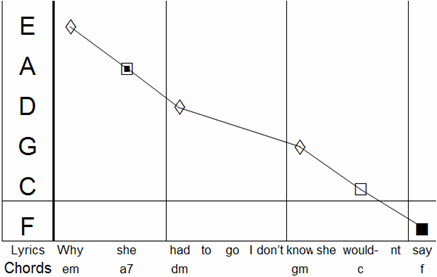Skyfall – what makes it sound so Bond-like?
I saw skyfall last night, and was fascinated by how the music managed to sound like Bond, without being a direct repeat of previous bond themes. I whipped the chords onto a SeeChord chart to have a look at what was going on. For once, it was not that illuminating really. There are only a handful of chords in the whole song:
cm-Ab-fm Ab mainly. However there is a crucial change of chord that occurs early on:
cm-Ab-F7-Ab. It is this use of F major that provides us with the crucial note to make one of the archetypal bond hooks. If we take now, just the top note of this chord progression (assuming that each chord has C as it’s lowest note) we get this tune.
G-Ab-A-Ab –
And it is this little hook that makes so much of Bond sound so, well, Bondy.
The thing I found most interesting was the fact that the Adele song uses such a strong harmony of F7 at this crucial point. Many Bond themes I have heard before – and I will analyse these further soon – stay on the more enigmatic chord made up of C-Eb-A – without the F. This might be a cmin6, which would not have the strength of that F chord.
One further thing that occurs later on is a nice “turnaround” (ii-V-I) of D7-G7-cm. The D7 chord would be quite surprising were it not for the occurance of the F7 before it. The A natural in the F chord prepares us for the D7 chord which also contains an A natural.
Sorry if this is a bit technical, it is hard to explain without a piano in front of me but I thought I’d share it with you anyhow! I have put the SeeChord chart of skyfall up on the site for those interested. More bond to come soon I think.

